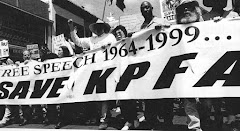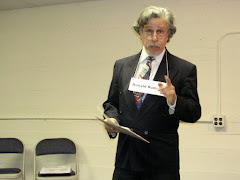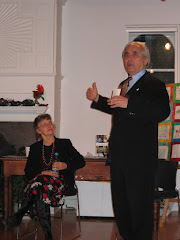By Greg Guma
I was wearing a hipster-establishment wide tie and cranking across the Interstate toward Lake Morey. Something between fear and early onset dementia had drawn me more than 100 miles to the Governor’s Conference on Older Workers. Actually, it was the “invitation” from my boss, who ran work and training programs across Vermont under contracts with the U.S. Department of Labor.
 |
| Gov. Tom Salmon in 1973 |
Half conscious, I pit-stopped in Manchester for coffee and news; gas shortage paranoia and the latest Washington Looney Tunes. Today the newsmaker was James McCord, competing for headlines with John Dean. The former White House counsel had secrets to tell, but the ex-wire man was threatening to sue. It was June 12, 1973, deep into the Watergate era, I was 26 years old, and getting prepared to spend a day deciphering the cliches of bureaucrats and businessman.
“Did you come for the same thing I did?” Walter shouted as he shuffled across the parking lot, his backdrop a paunchy foursome and the 18th green, tucked away a few miles from the highway. Chic. He repeated the welcome. “So, did you come for the same thing?”
“What?”
“The girls!” He elbowed me and winked, eyebrows edging toward receding hair. Sly devil. Walter was definitely an older worker. And a State Legislator. Despite the casual sexism, my first impulse was to grin. I settled instead for a return jab and headed quickly toward the Inn.
Once inside, I momentarily gaped at all the video equipment, before remembering that the state’s governor would attend. Only the second Democrat elected in a century, Vermont’s big fish, Tom Salmon, was heading toward this very spot.
I had tried to plan for everything, all the necessary gear and attire, and a mindset meant to camouflage how out of place I felt. But I’d messed up. Crossing my legs I stared down at two sneakered feet. The conference shoes were back in the car and I was trapped at the plenary session in ragged, torn white tennis shoes.
Most people were still hugging the back of the auditorium, downing their first drinks of the day. The cash bar here opened early. They hadn’t noticed me yet, so I made a run for the exit and retrieved a pair of black boots. Slightly scuffed, but they made me feel more secure.
What’s the point? Back in those days the dress code in places like the “home of the Vermont Open” was shifting slowly toward “mod,” especially since Salmon’s election, but it was still pretty formal. My tie was a safe choice, wide with a little flash. Similar touches were visible in a field of mostly grey suits. But sneakers? Not yet acceptable for official government or corporate work.
On a porch two veteran bureaucrats were shooting the breeze as they gazed at the lake on a warm late Spring day. One worked for the state, the other was a Fed. I stopped for a talk.
“I wish I could do that,” the Fed sighed. He nodded toward the young people on a beach below. Several of them were about my age, old enough for bank accounts and debts. Before his companion could ask what exotic things the “kids” were doing, the Fed explained. “You know, just take a few days and (sigh) do what I want.”
He savored the words. Then followed up with the news that I had already missed the best show the night before. Apparently, the fireworks were wondrous to behold. As I recalled later in an article for The Vermont Freeman, my mind wandered for a moment to a strange fantasy; balding men — from both public and private sectors — spacing out on the hotel light show, and baying at the moon as they hunted down female “assistants” through the underbrush. Weird things were happening in the Age of Aquarius.
 |
| Tom Salmon shares with a group as Greg takes notes. |
“The best way to tell a person’s age is not to.” This was the slogan for thought from the Commissioner of Employment Security, who issued the official welcome along with some quick tips and vital statistics. She explained, for example, that older workers are a good employer bet for several reasons — work habits, experience, productivity and dependability, plus their low absenteeism and high retention.
Next was the Coordinator of the National Council on Aging, who reminded us that “whether we like it or not, we get one day older each day we live.” Heavy. The rest of her talk was peppered with stats and logic apparently lifted from Reader’s Digest.
With more than 90 million people in the workforce, we learned, 45 percent were over 45 years of age. “Baby boom is now baby bust,” she claimed. “People 25 to 35 years old are not producing.” What America needed was 2.5 children per family, but only 2.0 were being produced. Noting that a third of all US citizens were over 55, she concluded with the upbeat announcement that the “youth revolution” was over.
Since those 1973 stats, the US workforce has almost doubled. However, the percent of people in it who are over 45 has actually stayed about the same. On the other hand, the birthrate has continued to drop, while the number of people over 65 has grown from 35 to 50 million in the last 20 years. They currently account for about 29 percent of the population.
According to a spokesmen for Vermont’s Apprenticeship Council, what the country needed in the 1970s was more manufacturing jobs for proud, dependable older employees, along with a reduction in the eligibility age for Social Security and, oddly enough, a lower minimum wage for students. The last suggestion took me by surprise.
“Wisdom, experience and productivity is being robbed from the economy,” the speaker warned. Nevertheless, “We WILL be blessed with clean air, clean water and lower noise levels. That doesn’t yet include rock bands. But we can hope.”
In the midst of such bad jokes and relentless pandering it was hard to keep my negativity in check. Making matters worse, a television in the room where I was writing my notes provided a jarring counterpoint. The coverage that day dealt with all manner of dirty tricks. Specifically, Gordon Strachan was tracing the White House-Committee to Re-elect the President (CREEP) approach to disciplining disloyal members of the Republican Party. Apparently, Nixon wanted to help “sympathetic” Democrats (a few still existed) while denying financial support to any Republican who defied the administration. This sounded a lot like President Trump.
But it wasn’t the news of the day or the talking points being hammered home at the conference that made me the most uncomfortable. It was how the real concerns of the elderly were being sidestepped and exploited to score points or secure funding.
It was too late for second thoughts, however. Everyone was standing for applause as Governor Salmon swept down the aisle. Grey suit, naturally, with wing-like lapels, red striped tie and healthy tan. Plus a flash of teeth that momentarily blinded me.
“I notice some younger types,” said the chief executive with a brief glance in my direction. It felt like an ominous start.
Salmon had reached “the ripe old age of 40,” he announced, while 49 percent of Vermonters were 25 years of age or younger. “The concerns of the young are a different proposition,” he concluded. The remark was perplexing. Maybe he was just trying to identify with his audience.
Charging on, Salmon mentioned a “fascinating article” he had read just that morning “between bumps and grinds.” That must have been a reference to the drive over. The story in Natural History was called “A New Age for the Aging.” But that’s all we heard about it, although his tone did indicate that the “new age” would be a good one.
Charging on, Salmon mentioned a “fascinating article” he had read just that morning “between bumps and grinds.” That must have been a reference to the drive over. The story in Natural History was called “A New Age for the Aging.” But that’s all we heard about it, although his tone did indicate that the “new age” would be a good one.
Over the next five minutes he transitioned from generalizations to anecdotes. Salmon talked about jogging, the billions spent on cosmetics and “the proliferation of books on diet.” Then he asked rhetorically, “How many of us have given up smoking? How many have advised that others give up smoking? All of these things indicate that, indeed, we are intensely aware of the process — getting along in years, growing old.”
Despite the platitudes, the performance was impressive. More than 150 people were happily digesting big scoops of Salmon’s random thoughts. There were few hard facts in the mix. What he offered mostly were feelings and jokes. Yet most of the audience was with him; the rest were at least trying to follow his train of thought. After all, it was his conference.
“Take a gander at the facts,” he instructed, right hand shooting out at some supporting data that was invisible to the rest of us. “If only we could double the post-training years, people could put back from their vast pool of resources twice as much.” It was reasonable, on the surface. But the argument reminded me of a line from the film comedy, The Heartbreak Kid: “It’s time people stopped taking things out of this country and started putting things back in,” says the witless hero.
To be fair, Governor Salmon was wandering toward a point. “A fundamental goal of this society is to extend the span of healthy years,” he eventually explained. So, the basic idea was that the able-bodied elderly could be putting more back into the economy. But the way he expressed it left me unconvinced. There were also obligatory references to the environment, the issue that had turned the election in Salmon’s favor the previous November, and warnings about the decline in industrial jobs as service employment increased.
Finally, he offered a candid admission: “We’re not doing anywhere near enough.” Yet you had to wonder, about what? Biological research? Industrial jobs? Jogging? It was hard to tell, and he was becoming distracted. Leafing through his notes, Salmon mumbled several times, “We haven’t done enough...”
After a moment, however, he recovered and shifted back into comedy club mode. “I had the pleasure of seeing Danny Thomas last week at Lake Tahoe at a governor’s conference,” Salmon recalled. At one point Thomas had asked a question: “Did you ever hear about a group of widowers touring Italy on a bus?”
Get it? Widowers. You see, husbands usually die first. Hilarious.
Get it? Widowers. You see, husbands usually die first. Hilarious.
We had reached the finale. The governor’s role, he explained, was “to serve as a catalyst for discussion and ideas.” But then he added a disclaimer. “We don’t want to give the impression we have a neat package plan.” No risk there. And some future shock. Salmon had just read Alvin Toffler’s book on the subject and summarized its point as follows: “Human beings are unable to accept too much change too fast.”
He also linked the idea that “we aren’t doing nearly enough” to another assertion, that “we’ve made modest beginnings.” The point? Apparently that, although we aren’t doing enough, we must also be wary of doing too much.
Edging away from the podium, Salmon assured everyone that he looked forward to more dialogue... but regretted that he had to leave. His exit line was another joke, this one unattributed: “I don’t have to leave, but I can’t stay here.”
The punchline hung in the air just long enough for the governor to glide out the door. What all of it suggested to me was simple: a good-looking young man with a deep voice and a first-rate tailor can move into some very high places.
At this point I had to ask: Why had I bothered to attend? Desperate for friends, or seeking tennis partners? Then I remembered — job security. But also had a more serious thought. Fear of aging was being manipulated, here and elsewhere, to promote a preoccupation with age. Related to that, one of the speakers had noted that the Older Americans Act was the only piece of social legislation that Nixon had signed. It was all that remained of President Johnson’s “war on poverty.”
After the morning session I walked past the bar. As usual it was packed. Passing on alcohol for the moment, I returned to my car for a private joint. Floating back to the lunch line my wide tie felt big enough to trip me.
Swim-suited teens sat in the canopied walkway between the parking lot and the lounge. “Every sha na na na, every wo oh oh oh, still shines,” they sang. “Every shing a ling a ling, that we started to sing, so fine.” The Carpenter’s nostalgic tune fit in well. Forward into the past.
I bought a beer and found a perch at the periphery of the action. The participants were mostly identified by name tags. Deals were definitely being made. The morning’s boredom had given way to the expectation of nailing down some funding.
A bit later, noticing a corner table surrounded by the low hum of lunchtime patter, I nabbed a seat. A man from GE was trading small talk with my boss and a younger management type. The manager was proto-Nixon, tightly wound, committed, and eager to make connections.
GE started the ball rolling. “Where do I know you from? Do you belong to the Elks?”
“No. Rotary,” said Nixon. As it turned out, they had even more common ground.
GE then turned to me and asked, “What do you get out of this?”
“All foreplay,” I whispered. “No action.”
Nixon zeroed in on my boss. “You with OEO?” He asked.
“Sponsored by them.”
A sly smile. “How’s funding look?”
“OEO looks dim, very dim,” he admitted. “But we DOL contractors have been expanded. Matter of fact, I got a call yesterday asking how much money I can use.”
Nixon recoiled, his lips narrowing to a slit. “I see,” he grumbled. This wasn’t what he expected, especially with the government trumpeting de-funding and Nixon promising smaller budgets and staff reductions.
“You always wonder,” my boss pressed, “what you would say to that kind of question. The real question, though, is whether you can use the money effectively.
“I see. Of course.” Nixon took a drag from his cigarette and turned to me, a missing piece of the puzzle, some young guy with longish hair making notes about who-knew what. “I don’t believe we’ve met.”
I smiled sheepishly and nodded down the side of the table lined with bureaucrats. “I’m with them,” I said.
Nixon was finding this slice of real life hard to swallow. But my boss explained that the main issue concerning what were then called “Manpower” programs was who would control the purse strings. Governors were the most likely candidates; states’ rights usually translated into governors’ discretion. And governors responded strongly in those days to at least two known stimuli — federal cash and weekends at Lake Tahoe.
Somewhere between lunch and the afternoon panel discussions I lost the thread of the day. Only phrases penetrated the fog of conference talk. Later, as I headed back along the Interstate, I passed a road crew. Young men were strung along a roadside ditch, sweating in the afternoon heat. It made me wonder, just what will be the future of young people like these in the new age of the aging?
The goal, as outlined during the conference, was to extend the years of productivity. Retirement was once the light at the end of the tunnel, a safety net and reward for decades of service. But the new reward was apparently another job. The logic was that normal people, “responsible citizens,” want to work as long as possible, no matter whether it is on an assembly line or at the side of the road. Given the national epidemic of boredom and depression, that didn’t make much sense.
Nevertheless, the prevailing assumption was that healthy people are “hooked in,” busy, off the street, and not concerned about changing the system. So, productive people are happy people, and older people, at least according to the experts at Lake Morey, could be the happiest of all. This was reinforced often through anecdotes and innuendo, a dubious notion that could only be asserted with confidence from a podium.
The reward for a lifetime of work used to be retirement, and maybe also a gold watch. In the future it may become a part-time job. But one ingredient still seems to be missing — a meaning for it all.

































No comments:
Post a Comment